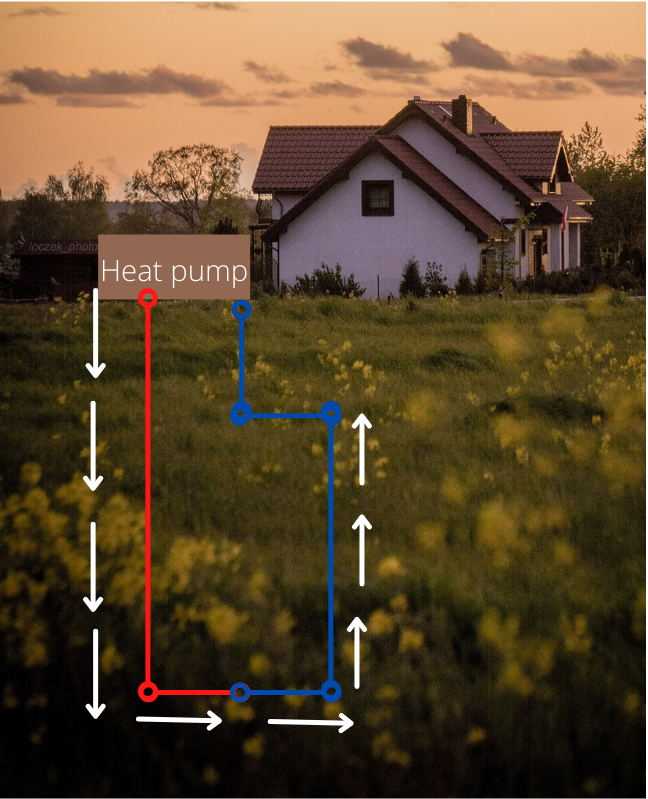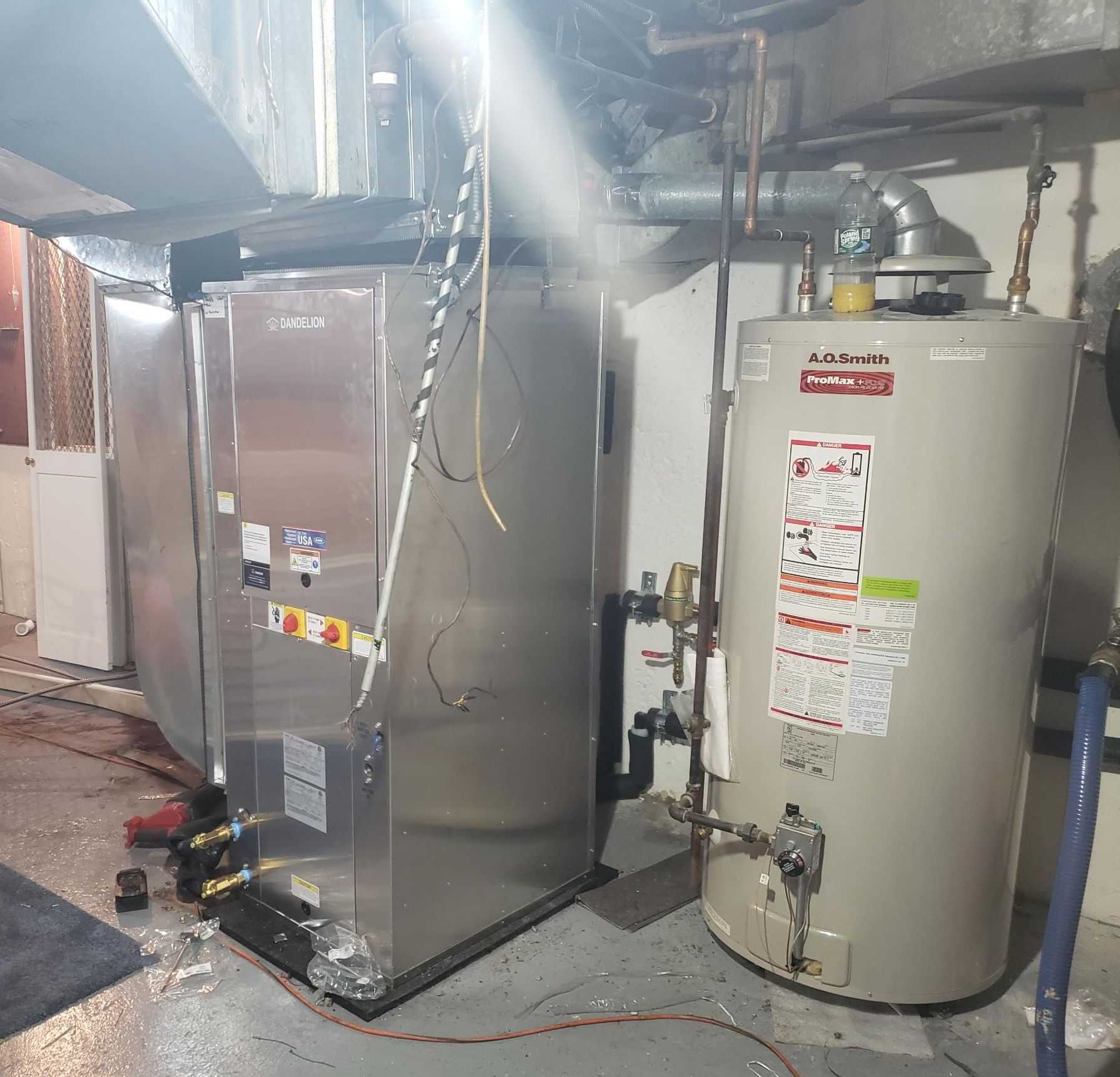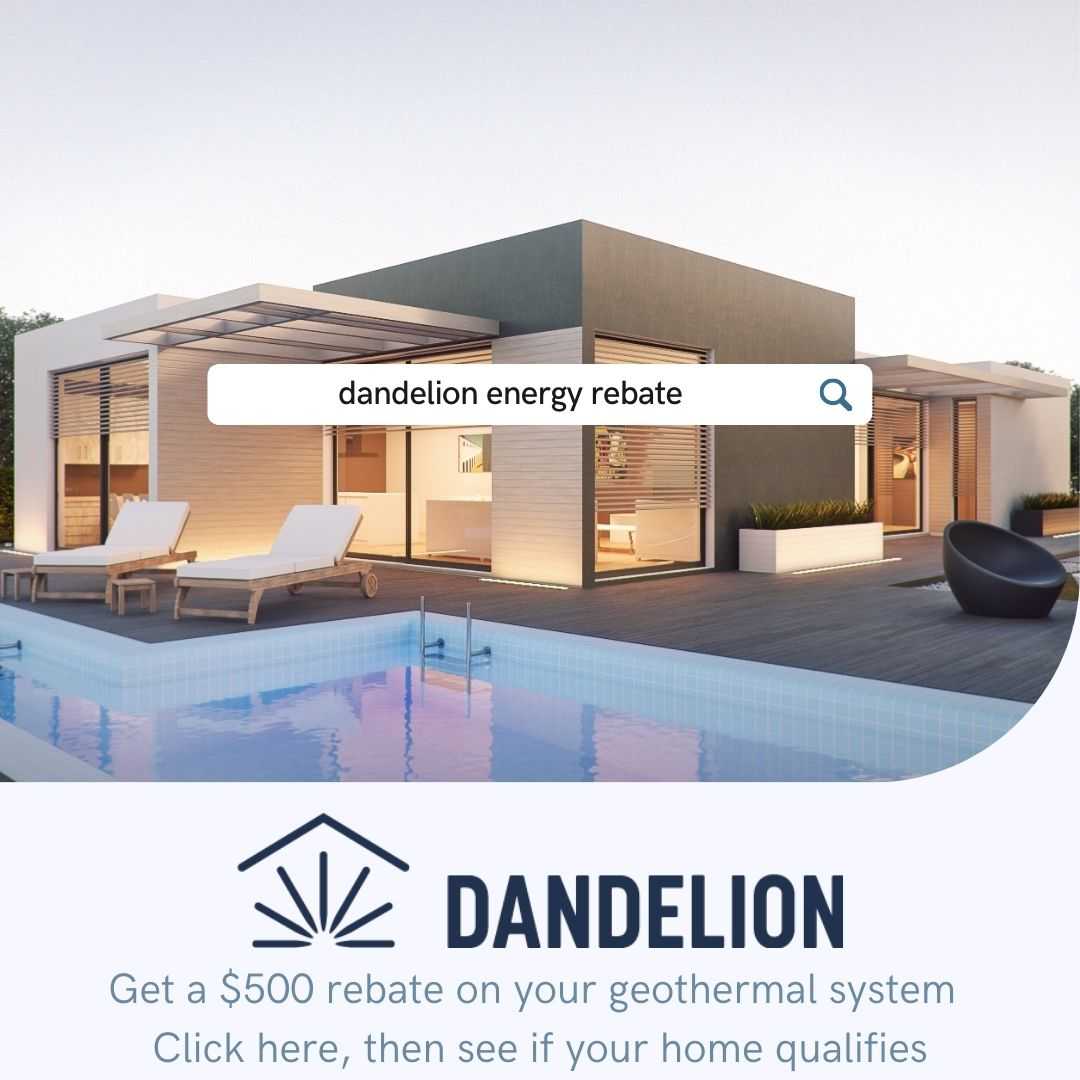Ground Source Heat Pumps: All About Geothermal Heating and Cooling Technologies For Your Home
6 min read · Last updated October 28, 2021

Ground source heat pumps (also called geothermal heat pumps) are a form of heating and cooling technology that can be used for homes. They use the earth's temperature to provide heating, ventilation, and air conditioning (HVAC) in buildings.
During cold months, geothermal or ground source heat pump systems transfer heat energy from the ground into your home. When it is warmer, this process reverses itself: heat is transferred back into the ground. A geothermal heat pump works as just part of a geothermal energy system.
Although that sounds a little oversimplified, we'll go through each part to make it as clear as possible!
Article Contents
What is a heat pump
Let's start with the basics. A heat pump is a device that, just as it sounds, moves--or pumps--heat from one location to another. They are reversible, meaning they can transfer move heat outdoors or indoors. They generally replaces furnaces and air conditioners, but they can be used in conjunction.
There are three main types of heat pumps:
Air source heat pumps
An air source heat pump works by transferring the outside air into your home and heating it up or cooling it down before blowing it through the vents. Air source units work best in cooler climates where you need less space heating than cooling, but still need some type of HVAC system for year-round comfort.
Basically, air source heat pumps work like refrigerators. They pull in air and use coils to cool the air (transfer the heat out) before blowing it into your home via ducts. Because it's easier to cool the air than warm it, these units work better where AC is needed than where heat is needed.
Water source heat pumps
A water source heat pump performs the same operation, it just uses a building loop of water instead of the outside air.
Ground source heat pumps
A geothermal heat pump lets Earth do the work. A ground source heat pump takes advantage of the constant temperature below ground. It works by transferring heat from your home to the ground, or vice versa. This means that they can provide heating and cooling for you year-round, efficiently and affordably.
Given this article is about ground source heat pumps, let's get more into the details of what a geothermal system is and how it works.
How a ground source heat pump works
Ground temperature

The Earth's surface temperature varies a ton throughout the year. The top layers of the soil freeze and thaw along with air temperature. However, if you dig down just 10 or 20 feet, you will find that the temperature is somewhere between 50 and 60 degrees Fahrenheit no matter what time of year it is and no matter where on Earth you are. Pretty cool! (pun intended, ha!) A ground source heat pump takes advantage of the relatively constant temperature of the subsurface soil to transfer heat between your home and the Earth.
The simple version
A geothermal heat pump works by pulling heat from the ground to warm your home in the winter or transferring heat back to the ground to cool your home in the summer.
Heat is transferred through liquid in pipes buried in trenches dug deep into the ground. These pipes are called ground loops and are part of the entire geothermal system. The geothermal heat pump is what does the heating and cooling of the air using the 50 degree liquid.
Geothermal cooling
When the air in your home is 75 or 80 degrees in the summer, the 50 degree ground temperature is used to cool the air down to a comfortable temperature.

The heat pump circulates the liquid through the closed loop system where it is cooled to 50 degrees (just by being in contact with the 50 degree soil as it travels through the ground loop). This 50 degree liquid (the blue liens on the image) is used by the heat exchanger in the heat pump to cool the air running through your ducts and into your home.
The now heated liquid (the red lines on the image) is then run back through the ground loop where the Earth absorbs heat created by the heat exchanger.
As mentioned above, this is exactly how a refrigerator works; your refrigerator is a heat pump running on cooling mode where air is used as the medium for exchanging heat. (An air source heat pump).
Geothermal heating
This works pretty much the same as cooling, just in reverse. When the air in your home (or outside) is below 50 degrees, the heat exchanger in the geothermal heat pump uses the 50 degree liquid to warm the air passing through the ducts. The cooled liquid then passes through the ground loop where it is again warmed to 50 degrees.
Does that mean my air can only be heated to 50 degrees?
Great question! But no, the heat pump extracts heat from the liquid using its heat exchanger to warm air well above the 50 degree mark. The energy required to extract that heat comes from electricity as opposed to the burning of natural gas or oil.
Frequently asked questions
Where does the geothermal heat pump go?

In most installations, the heat pump replaces your furnace. For us, the heat pump sits in the basement connected to the ductwork. Since the heat pump handles both heating and cooling, that means you don't need a big air conditioner unit in your yard. For us, that was a major bonus!
Read about our geothermal installation experience.
How efficient are geothermal heat pumps?
Every 1 unit of electricity used to power geothermal systems provides 4 units of heat energy; that is almost 4 times the efficiency of the average new furnace.
Geothermal heat pumps achieve this efficiency because they don't have to generate heat. While a traditional furnace has to make its own heat by burning natural gas or oil, a geothermal heat pump uses the heat from the ground, which is 100% renewable energy! The additional energy from electricity required to extract the heat only constitutes about 30% of the total energy output.
What maintenance do geothermal heat pumps require?
Ground source heat pumps require a very low level of maintenance.
Like with a traditional furnace, air filters need to be changed regularly.
Your installer will let you know what other maintenance is required. We have a Dandelion Energy system (read our Dandelion Geothermal review); they recommend a basic inspection every five years.
How long do geothermal heat pumps last?
Geothermal heaters last longer than conventional heating and cooling systems; most last 25 years. Compare that to central air conditioning lasting between 10 and 15 years and the average furnace lasting 15 to 20 years.
Geothermal ground loops tend to last even longer; generally at least 50 years.
Are geothermal heat pumps effective in cold climates?
Geothermal heat pumps work well in winters anywhere in the United States. The temperature below the Earth's surface is 50 - 60 degrees no matter where you are.
We live in New York state where the average low temperature in January is 26 degrees, and our system had no problem keeping our house comfortable.
How noisy is a geothermal heat pump?
Geothermal heat pumps are about as noisy as an average furnace. The majority of the noise comes from the fan used to blow the air through the ducts, which is required by any equipment that is heating or cooling your home.
How much electricity does a ground source heat pump use?
While this will vary from home to home, for us, the heat pump uses more electricity than our natural gas furnace did, but not as much as our old AC unit did. That means that we pay more for electricity than we used to in the colder months and a little less than we used to during the summer. The biggest savings comes from not having to use natural gas!
This graph is from our Dandelion Energy heat pump monitoring system during January. As you can see a little over a third of the energy comes from electricity, as I mentioned above in the efficiency section. During this period 270 kWh of electricity were used and the rest came from geothermal energy.
What do geothermal systems include?
As mentioned above, a geothermal heat pump is just one part of a geothermal system. The other part is the ground loop system that I've mentioned a few times. The heat pump sits in your basement or attic, or wherever your furnace is, and the ground loops are run through big wells dug in your yard. Closed loop systems, open loop systems, and pond/lake systems are the most common.
How much does a geothermal heat pump cost?
Geothermal heat pumps cost a little more than the average furnace, but don't forget that they also replace an air conditioner. The cost of the heat pump is less than the combined cost of a gas or electric furnace and an air conditioner.
The larger cost is the installation of the closed loop system which is required as part of a complete geothermal system.
Read about the exact cost for the 5-ton geothermal system we had installed this year.
What size heat pump do I need for 3000 sq ft?
Geothermal heat pumps are sized by tons; for example, our home has a 5-ton heat pump. The size in tons is figured out by how many BTUs your home needs (BTUs are a way to measure heat energy).
The main driver in what size heat pump you need is the size of your home. The second factor is your climate; you'll need a larger heat pump if you live in a colder climate.
| Home Size (sq ft) | Heat Pump Size (BTUs) | Heat Pump Size (Tons) |
|---|---|---|
| 750 | 22,500 | 1.75 |
| 1,000 | 30,000 | 2.5 |
| 1,500 | 45,000 | 3.75 |
| 2,000 | 60,000 | 5 |
| 3,000 | 90,000 | 7.5 |

